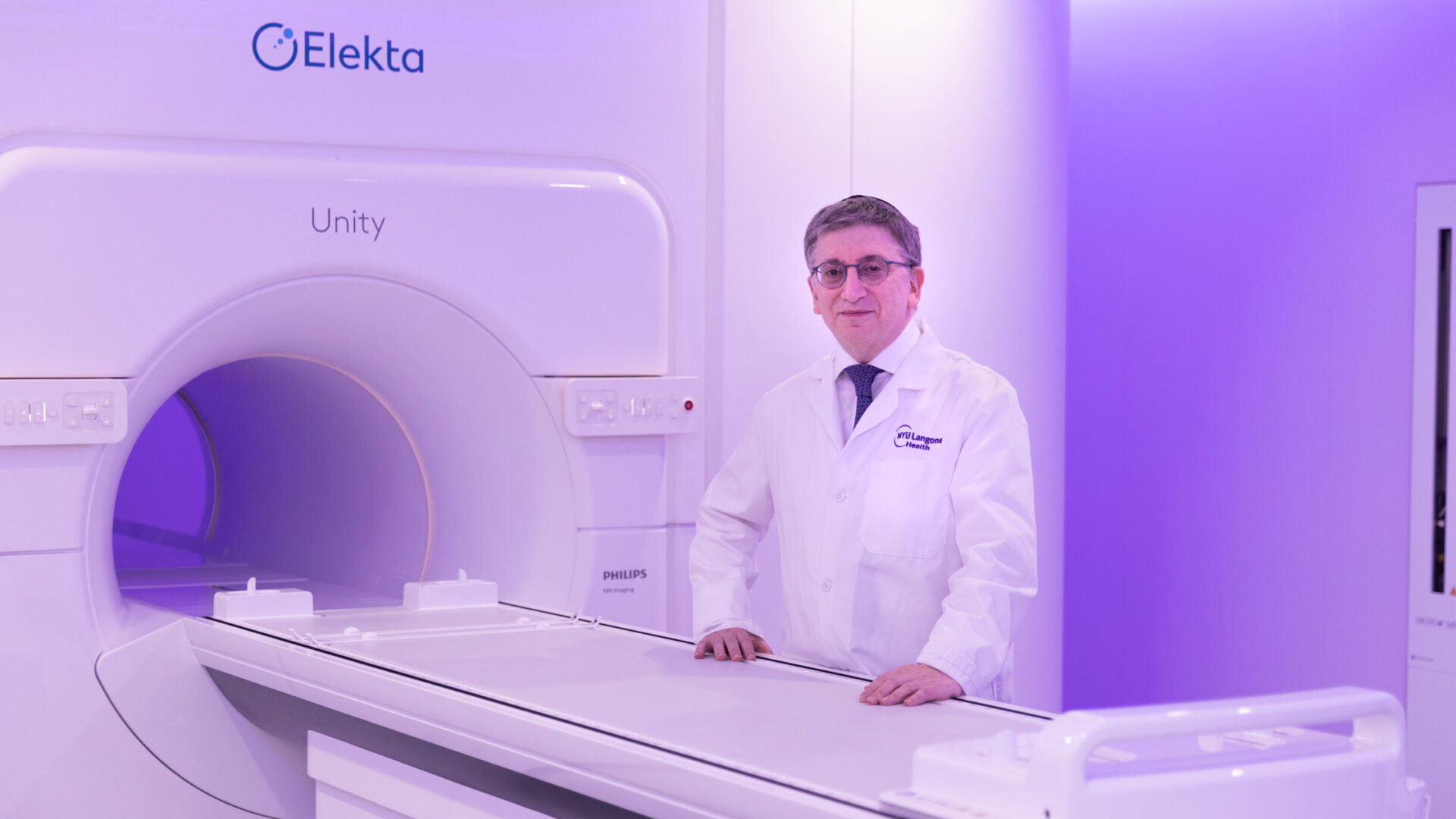In August 2023, NYU Langone Health began offering highly precise radiation therapy for prostate cancer with its newly installed MRI-guided linear accelerator (MR-Linac). Thanks to its submillimeter precision, the groundbreaking technology offers more-personalized and targeted radiation, with fewer side effects than traditional treatment options.
Here, Michael J. Zelefsky, MD, a professor of radiation oncology and director of the MR-Linac program, discusses the multiple accomplishments his multidisciplinary team has reached in less than two years. Those successes, he explains, are also aiding new efforts to further refine the technology and expand its reach.
Physician Focus: Dr. Zelefsky, what would you count as your biggest accomplishments since the MR-Linac went live?
Dr. Zelefsky: The most obvious and exciting one is that we built the world’s largest MR-Linac program for prostate cancer basically from scratch. We decided to put our treatment emphasis on prostate cancer and developed an adaptive planning approach. Submillimeter adjustments are made in real time, allowing us to target the prostate tumor with super-high accuracy.
“What we’ve done is something unique and recognized around the world.”
Michael J. Zelefsky, MD
In less than two years, we’ve treated more than 400 patients with this approach. These patients are treated with state-of-the-art stereotactic body radiation treatment (SBRT) over five sessions, which delivers unprecedented precision while minimizing the dose to normal tissue. Almost all of our patients have complete resolution of their tumor six months after treatment. What we’ve done is something unique and recognized around the world.
Physician Focus: How have you been able to further refine the treatment process?
Dr. Zelefsky: Because of the sheer number of prostate cancer patients we treat, we have huge experience in using continuous motion monitoring. If the prostate moves by even a fraction of a millimeter, we can detect that motion in real time—and the beam automatically stops if the prostate moves out of our zones of interest.
The other thing is that we’ve routinely implemented dose intensification to the tumor area within the prostate. Because the MR-Linac allows us to spot abnormal regions with the needed accuracy in real time, we can intensify the radiation dose as needed to hit the tumor where it is most concentrated.
For more-aggressive prostate tumors, we combine the five-session MR-Linac regimen with a high-dose-rate brachytherapy procedure to deliver a focused, single-dose radiation booster given as an internal treatment; this combination has been associated with increased cure rates.
Physician Focus: How has the team approach at NYU Langone aided these efforts?
Dr. Zelefsky: We are most proud of the multidisciplinary efforts that go into this. It’s not a one-person show here; we have physicists, MR technologists, dosimetrists or planners, radiation therapists, physicians, nurses, schedulers, and administrators all working in unison. The unique aspect is having multiple talents all fused together in one area with a common goal and interest in providing state-of-the-art therapy—that’s been really extraordinary and is what makes this successful.
Physician Focus: How do you hope to further improve the treatment process?
Dr. Zelefsky: NYU Langone has a real opportunity to incorporate AI into the planning processes, into the mapping of treatment, and making this an even more efficient tool. Ultimately, our goal is to be able to treat these patients in shorter periods of time, which obviously would be more comfortable for the patient, but without compromising one iota of accuracy.
“Our goal is to be able to treat these patients in shorter periods of time … but without compromising one iota of accuracy.”
We are also working with our MR prostate radiologists to identify the nerve bundles more effectively and the components of the anatomy involved in erections. Our goal is to develop accurate ways of nerve-sparing treatment, where we can more confidently restrict or eliminate the dose to the anatomic structures that are involved in erections. And we’re making excellent progress in that regard.
Physician Focus: Given your successes, how are you looking to expand the program?
Dr. Zelefsky: The most obvious way is to expand into other disease sites. There’s a great deal of promise in utilizing this technology for pancreatic cancers, which are notorious for poor outcomes, and for certain liver and lung cancers. We’re exploring the possibility of applications in brain and spine tumors as well.






